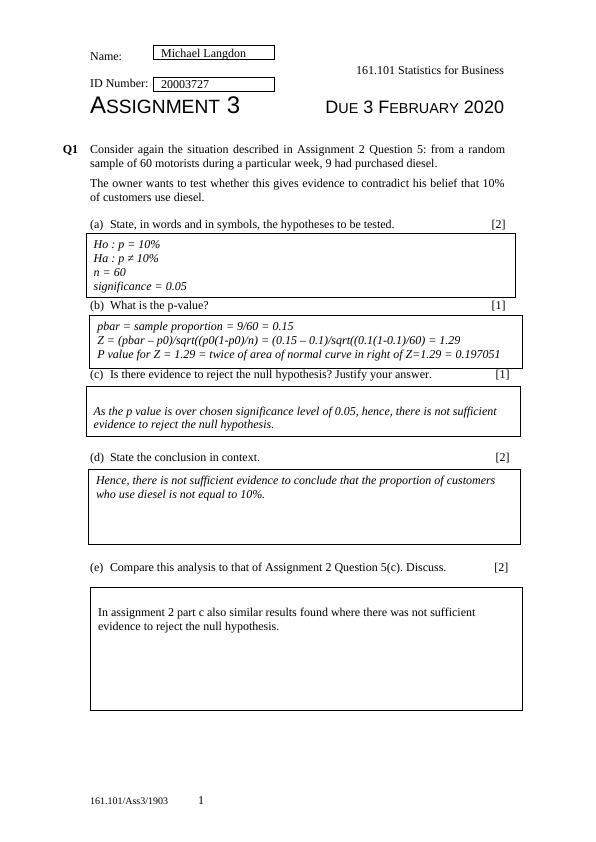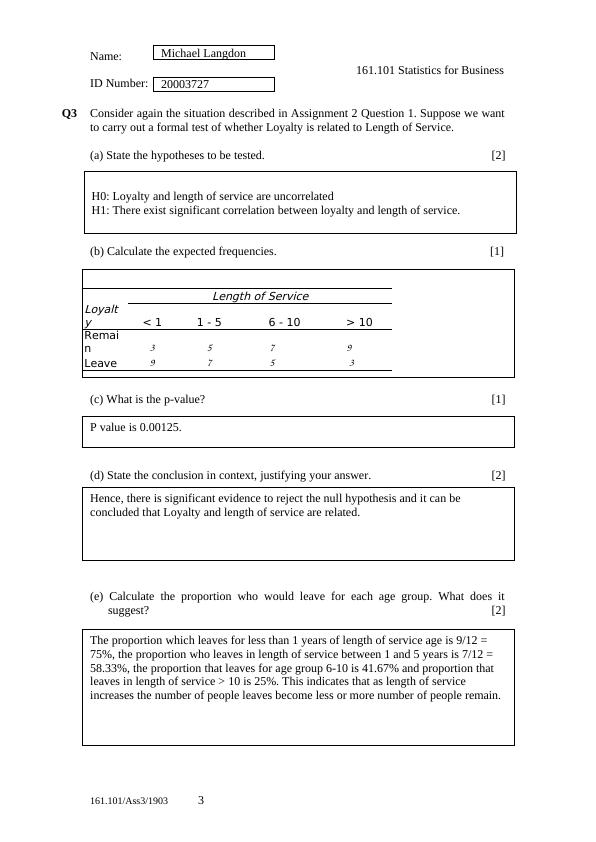Assignment definition and meaning | Assignment
Testing hypothesis about the proportion of customers using diesel in a sample of motorists.
8 Pages1142 Words21 Views
Added on 2022-08-21
About This Document
Hypothesis Testing
Assignment definition and meaning | Assignment
Testing hypothesis about the proportion of customers using diesel in a sample of motorists.
Added on 2022-08-21
ShareRelated Documents
End of preview
Want to access all the pages? Upload your documents or become a member.
Statistics Assignment 4 with Solutions and Answers
|7
|1476
|280
Assignment on Statistics Report
|18
|2125
|67
Biostatistics Assignment 2 Solutions - Desklib
|6
|860
|423
Estimation and Testing of Capital Asset Pricing Model Assignment
|12
|1900
|98
Data Analysis of Koalas- doc
|20
|3290
|133
Epidemiology for Health and Medical Sciences II - Assignment 2
|7
|2457
|122



